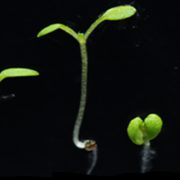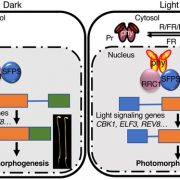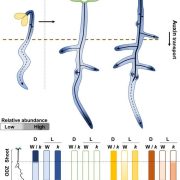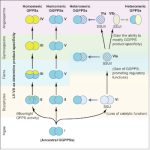Inhibition of SIZ1-mediated HLS1 SUMOylation promotes light-induced apical hook opening
Xiong and Yang et al. explore how plants regulate rapid opening of the apical hook in the light.
By Jiawei Xiong and Dawei Zhang, Ministry of Education Key Laboratory for Bio-Resource and Eco-Environment, College of Life Science, State Key Laboratory of Hydraulics and Mountain River Engineering, Sichuan University, Chengdu, P.R.China.
Background: When seeds are buried in the soil and germinate, the young seedlings undergo skotomorphogenesis, in which the elongating shoot forms an apical hook. The apical hook protects cotyledons and the shoot apical meristem from mechanical injuries as the shoot emerges from the soil. After reaching the soil surface, seedlings undergo photomorphogenesis, and the apical hook quickly unfolds to allow the shoot to grow upward. HOOKLESS1 (HLS1) is a central regulator of apical hook development, as a terminal signal onto which several pathways converge.
Question: How do plants regulate the rapid opening of the apical hook in response to light by modulating HLS1 function?
Findings: The SUMO E3 ligase SIZ1 interacts with HLS1 and mediates HLS1 SUMOylation. SUMOylated HLS1 is more likely to assemble into oligomers, which are the active form of HLS1. Upon exposure to light, HY5 suppresses SIZ1 transcription, thus decreasing HLS1 SUMOylation and initiating rapid apical hook opening. Our study not only describes one post-translational modification of HLS1, but also reveals a rapid mechanism regulating apical hook opening via SIZ1-mediated SUMOylation of HLS1.
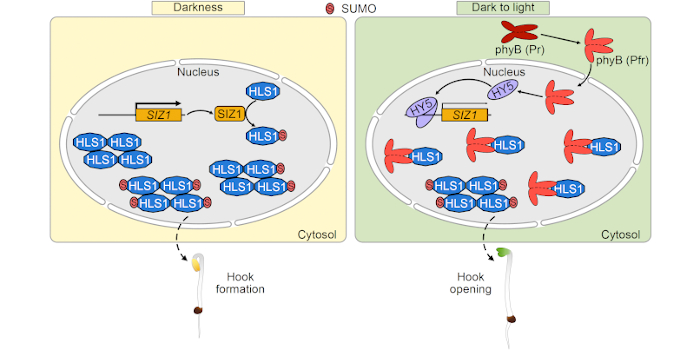 Next steps: We will further study other post-translational modifications of HLS1 in response to light, as well as the effects of SUMOylation on other biochemical functions of HLS1.
Next steps: We will further study other post-translational modifications of HLS1 in response to light, as well as the effects of SUMOylation on other biochemical functions of HLS1.
Jiawei Xiong, Fabin Yang, Fan Wei, Feng Yang, Honghui Lin, Dawei Zhang. (2023). Inhibition of SIZ1-mediated SUMOylation of HOOKLESS1 promotes light-induced apical hook opening in Arabidopsis https://doi.org/10.1093/plcell/koad072




